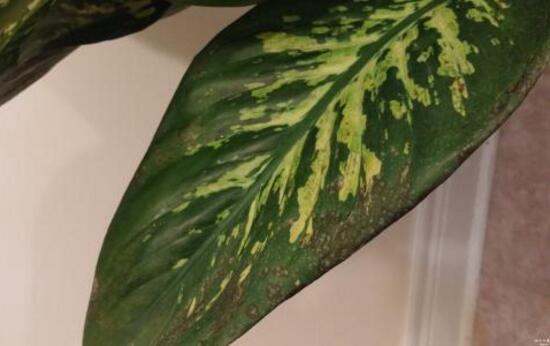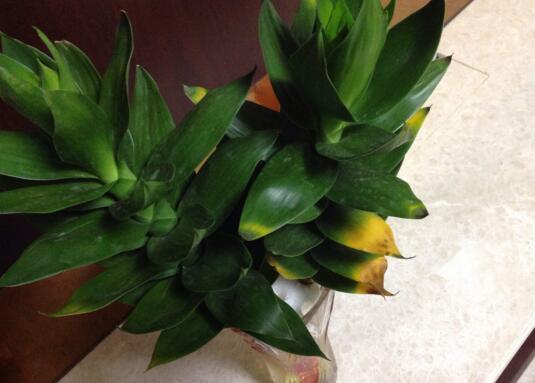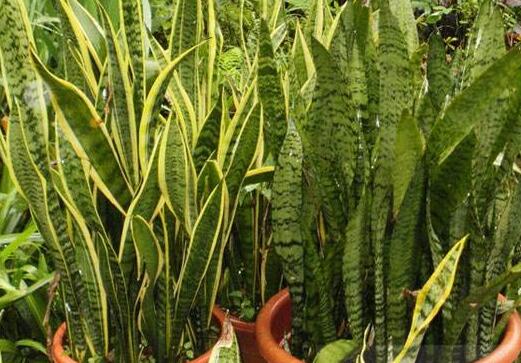What if the leaves of evergreen leaves turn yellow, adjust the temperature, apply appropriate amount of fertilizer / control diseases and insect pests
Evergreen flowers and leaves, a beautiful foliage plant, its green leaves, evergreen all the year round, plus the spots of different colors, it looks really beautiful. But in the process of breeding, because of improper maintenance, many flower friends' evergreen flowers and leaves will appear yellow leaves, then the leaves of evergreen leaves yellow how to do? At this time, we must not be in a hurry. Today, the editor will tell you that we are willing to solve the problem.
First, flowers and leaves evergreen yellowing, looking for the cause

In life, because of the beauty of evergreen flowers and leaves, many people will plant it at home. But many of them did not look at the breeding methods of evergreen flowers and leaves, resulting in yellow leaves because of fertilization, temperature and soil. As for the yellow leaves of evergreen leaves, we just need to find the cause and solve the problem.
Second, the causes and solutions of yellowing of leaves of evergreen leaves.
1. Soil alkalinity.
Evergreen is most suitable for growing in loam soil which is loose and fertile, well drained and rich in organic matter, which is slightly acidic. But in the process of breeding, flower friends change the soil into alkaline soil, or pour alkaline water for a long time, which will cause flowers and leaves evergreen soil leaves to turn yellow. The reason for this is that due to the lack of elements such as soluble iron that can be absorbed, the leaves will slowly turn yellow.
The solution is very simple: change the basin soil and replace it with a new type of culture soil; if the yellow leaves are not serious, you can often pour alum fertilizer water to change the acid and alkali of the soil.
2. Improper fertilization
Excessive fertilization: evergreen flowers and leaves like fertilizer, the growth process needs appropriate fertilization to ensure adequate nutrients, but fertilization can not be too much, otherwise there will be new leaf hypertrophy, and uneven, the old leaf dry tip scorched yellow shedding solution: immediately stop fertilization, increase the amount of water, so that fertilizer loss, or immediately pour pot, rinse bulb with water and then replant into the pot.
Insufficient fertilization: the growth of evergreen flowers and leaves is inseparable from fertilizer, once there is no application of nitrogen fertilizer or did not change the basin for a long time, resulting in the lack of nitrogen and other nutrients in the basin soil, the branches and leaves will be thin and yellow. Solution: change into new culture soil in time, and gradually apply rarefied mature liquid fertilizer or compound flower fertilizer.
3. Improper temperature
The temperature is too low: the flowers and leaves are always green and like a warm environment. If the temperature is too low in winter and there are no measures to keep warm, the plants will appear yellow leaves and die in severe cases. Solution: adjust the temperature in winter to keep the room at 13: 18 ℃.
The temperature is too high: the flower and leaf evergreen is not heat-resistant, once the room temperature is too high, the plant transpiration is too high, the root water and nutrients are in short supply, and the leaves will turn yellow. Attention should be paid to timely adjustment of room temperature. Solution: control the temperature in summer so that the temperature does not exceed 30 ℃.
4. The light is too strong
Plants with evergreen flowers and leaves like semi-shade, so they need shade when the light is strong except in winter. Once the flower and leaf evergreen is placed in a high temperature place to let the strong light direct sunlight, it is very easy to cause the young leaf tip and leaf edge scorched, or the leaf yellow to fall off.
Solution: what if the leaves of evergreen turn yellow? If it is the light temperature, you should move it to a cool place with good ventilation in time.
5. Plants are too dense
Some flower friends think that the denser the flowers and leaves grow, the better. In fact, this is wrong. Because when the flowers and leaves of evergreen grow too luxuriantly, coupled with long-term unpruned, the plant will be too dense, the leaves inside can not receive light, and the phenomenon of yellowing and shedding.
Solution: nitrogen fertilizer can not be less, but not more; in addition, strengthen pruning to make it ventilated and transparent.
6. Diseases and insect pests
In the growth process of evergreen flowers and leaves, because of improper maintenance, it will be attacked by diseases and insects. Disease symptoms: light flowers and leaves evergreen leaves soft; heavy flowers and leaves evergreen leaves yellow shedding.
Solution: determine what kind of disease and insect pest it is, and then solve the problem by spraying. As for what medicine should be sprayed, there is a detailed introduction in the prevention and control of diseases and insect pests of evergreen flowers and leaves, but there are not many here.
Generally speaking, it is not difficult to raise evergreen flowers and leaves, but because many flower friends are novices, it is inevitable that there will be symptoms of leaf yellow. However, after reading the full text, I believe you have a bottom in your mind. If there is a Ye Huang problem, you can follow the above method. With regard to the yellowing of the leaves of evergreen leaves, the editor has introduced this, hoping to give you some help.
What if the leaves of the evergreen leaves are not growing up, supplement nutrients, appropriate amount of light / change the pot soil
The flower and leaf evergreen is poisonous, but it is still potted at home by many people, not only because it can purify the air, but also because it grows well, especially its spotted leaves look particularly attractive. So when the evergreen leaves do not grow up, the flower friends are very anxious, so what should we do at this time? Today, the editor is here to solve this problem for everyone.
First, flowers and leaves evergreen leaves do not grow up, look for the source of the disease
In life, because of the powerful role of flowers and leaves, they are potted at home by many people. But for some reasons, the evergreen leaves do not grow up, thus affecting the ornamental, at that time flower friends must be very urgent! In this regard, the editor found four reasons for you: soil discomfort, improper lighting, insufficient fertilization and disease and insect damage, and attached solutions, let's move on.
Second, the reason why the leaves of evergreen do not grow up.
1. Soil discomfort
When growing evergreen flowers and leaves indoors, potted soil is the foundation, and it is selected, which is very beneficial to the growth of plants. But if the pot soil is not good, such as poor drainage, not fertile enough, and so on, it will make the evergreen leaves grow up.
Solution: if the leaves are not growing up caused by soil discomfort, it is easy to remedy, we just need to find some more fertile and well-drained soil to replace it. Of course, when choosing a flowerpot, you should also look at its drainage.
2. Improper lighting
In the process of the growth of evergreen flowers and leaves, light is indispensable, but it likes semi-shade, so the light can not be too strong. Once the light is improper, symptoms such as yellowing of evergreen leaves and small growth of evergreen leaves will appear.
① light is too strong: if the evergreen leaves are exposed to strong light, their leaves will become dull and have an impact on its growth, resulting in symptoms of small leaves. Solution: move to a hidden place, and appropriate watering, after a period of time and then normal maintenance. In peacetime, when you encounter a strong light, you must block it in time.
② lack of light: the light should not be too strong, but it should also be sufficient. Once the light is not enough, the ability of the evergreen to absorb nutrients will be weakened, the metabolism will be slow, so it will cause its growth stagnation, the ultimate performance is that the leaves do not grow up. Solution: be sure to give it proper sunlight at this time.
3. Insufficient fertilization
Flowers and leaves evergreen leaves do not grow up, flower friends will certainly think of the problem of fertilization, after all, plant growth is inseparable from nutrients. Once the evergreen leaves are not fertilized for a long time, it will grow slowly and its leaves will not grow up naturally.
Solution: at this time, we need to apply fertilizer to it once in about 10 days, and after entering the autumn, we can apply phosphate fertilizer twice more. Only in this way can it meet the needs of its growth, and the leaves will grow slowly.
4. Diseases and insect pests
In the growth, for a variety of reasons, flowers and leaves will inevitably be affected by a variety of diseases, and this will directly hinder its growth, become slow, resulting in symptoms of leaf growth.
Solution: when it is found that the leaves of evergreen leaves are not growing up, we must timely observe their own plants to see if there is a disease, if so, first determine which kind of disease, and then solve the problem. In this regard, you can refer to the pest control of evergreen flowers and leaves.
Generally speaking, it is not difficult to raise evergreen, as long as we understand the breeding method of evergreen, and then be sure carefully, it will grow very beautiful. Of course, do not panic when it comes to evergreen leaves, just follow the above solution. Finally, may everyone's flowers and leaves grow beautiful.
The reason for the yellowing of evergreen leaves
Raising evergreen at home will encounter the situation of yellowing leaves, don't worry at this time, first make clear what the reason is, and then prescribe the right medicine to solve the yellowing problem of evergreen leaves!
Yellowing of leaves caused by long-term loss of fat
Evergreen has not applied nitrogen fertilizer or changed water for a long time, and there is a lack of nitrogen and other nutrient elements in the water, resulting in thin and yellow branches and leaves. If the hydroponic evergreen needs to be changed into new culture water in time, the rarefied mature liquid fertilizer or compound flower fertilizer should be applied gradually.
Yellowing of leaves caused by excessive fertilization
If you fertilize too much, the new leaves of evergreen will be thickened, and the old leaves will be rugged, and the dry tips of the old leaves will fall off. You should immediately stop fertilization, increase the amount of water exchange, make the fertilizer lose, or immediately pour the pot, rinse the bulb root with water and then replant it into the basin.
Yellowing of leaves caused by heat
If the flowers are placed in a high temperature place to let the strong light shine directly, it is very easy to cause the young leaf tip and leaf edge to scorch, or the leaf yellow to fall off. Move to a well-ventilated shady place in time.
Yellowing of leaves caused by excessive shading
If the flowers are kept in shade or in a place with insufficient light for a long time, it will cause the branches and leaves to turn yellow.
Yellowing of leaves caused by alkali in soil and water
Due to the lack of soluble iron and other elements that can be absorbed by the water, the leaves of evergreen will gradually turn yellow. Acid soil and water should be selected when planting, and alum and fertilizer water should be often irrigated during the growth period.
Yellowing of leaves caused by poor ventilation
If the application of too much nitrogen fertilizer, the evergreen branches and leaves grow too luxuriantly, coupled with long-term unpruned, resulting in insufficient light of the inner chamber branches and leaves, which is easy to cause the leaves to yellowing and falling off. Reasonable fertilization should be applied and pruning should be strengthened to make it ventilated and transparent.
Yellowing of leaves caused by dry air
When the indoor air is too dry, flowers often appear leaf tip dryness or leaf edge scorching and other phenomena. Attention should be paid to water spraying, plastic film cover and other methods to increase air humidity to prevent the occurrence of leaf yellowing.
Yellowing of leaves caused by improper temperature
When the room temperature is too low in winter, the flowers suffer from cold damage, which leads to the yellowing of the leaves and death in severe cases. If the room temperature is too high, the transpiration of the plant is too high, and the root water and nutrients are in short supply, the leaves will turn yellow. Please pay attention to adjust the room temperature in time.
Yellowing of leaves caused by diseases and insect pests
Leaf spot disease caused by fungi and other bacteria is easy to cause local necrosis of leaves, yellow spots or patches, serious withering and falling off of the whole leaf, yellow-green mottle on the leaves infected by mosaic virus, and harm to shell insects, red spiders and so on.
Yellowing of leaves caused by strong sexual stimulation
The use of excessive concentration of pesticides in the prevention and control of diseases and insect pests, or being polluted by toxic gases in the atmosphere, or suddenly watering cold water when the temperature is high, are easy to cause local yellowing and scorching of the leaf tip or leaf surface, or even the whole plant to die. Therefore, we should pay attention to the rational use of pesticides and try to eliminate air pollution sources. Avoid watering flowers with cold water around noon in midsummer.
The yellowing of evergreen leaves is sometimes caused by one reason, but most of the time it is caused by many factors. Therefore, a correct diagnosis should be made in order to prescribe the right medicine to the case.
- Prev

Quan Yin bamboo leaves yellowing how to do, strong light / lack of water / lack of fertilizer / low temperature caused by / / attached method
As we all know, one of the fengshui functions of Guanyin bamboo is to flourish, and only if its leaves are thicker and greenish, the effect will be better, on the contrary, if the leaves turn yellow, then the effect will be very poor, and some flower friends will encounter the phenomenon of yellowing in the process of culture. so what about the yellowing of Guanyin bamboo leaves? The editor will tell you the answer.
- Next

Tiger tail orchid leaves rotten how to do, six reasons make the leaves yellow rot / with a solution
We know that one of the functions and functions of the tiger tail orchid is to watch the leaves. It is also named for the tiger pattern on the leaves, but when it is cultured, it will cause the leaves to wither, yellowing or even rot for various reasons, which greatly reduces its ornamental quality.
Related
- Fuxing push coffee new agricultural production and marketing class: lack of small-scale processing plants
- Jujube rice field leisure farm deep ploughing Yilan for five years to create a space for organic food and play
- Nongyu Farm-A trial of organic papaya for brave women with advanced technology
- Four points for attention in the prevention and control of diseases and insect pests of edible fungi
- How to add nutrient solution to Edible Fungi
- Is there any good way to control edible fungus mites?
- Open Inoculation Technology of Edible Fungi
- Is there any clever way to use fertilizer for edible fungus in winter?
- What agents are used to kill the pathogens of edible fungi in the mushroom shed?
- Rapid drying of Edible Fungi

